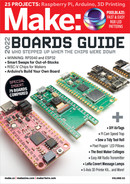
PROJECTS Remaking History
Chrisaan Huygens and the
Pendulum Clock
Written and photographed by William Gurstelle
Build the ingenious gravity-driven mechanism
that kept the world’s time for 270 years
The Scientific Revolution was a momentous time.
Most historians of science agree that during this
era — 1500 to 1700 CE — people started thinking
differently, more scientifically, about the way the
world worked. Many began to think of the world
as being an orderly machine, one in which laws
and rules controlled the way nature worked.
Although scientists, or natural philosophers as
they were then called, did not necessarily know
exactly what these laws were, they were certain
they were there, working behind the scenes.
The superstars of the Scientific Revolution
were Galileo, Copernicus, and Newton, but there
were a number of other important thinkers as
well: Robert Boyle, Johannes Kepler, and René
Descartes, to name but a few. Often overlooked
in the crowd of luminaries is the great Dutch
scientist Christiaan Huygens. Huygens first
made sense of Saturn’s rings; discovered Titan,
the largest moon in the solar system; laid the
100 makezine.com
Adobe Stock-acrogame, loc.gov/resource - Leupold Jacob
M83_100-103_RemHist_F1.indd 100M83_100-103_RemHist_F1.indd 100 10/11/22 10:35 AM10/11/22 10:35 AM
..................Content has been hidden....................
You can't read the all page of ebook, please click here login for view all page.
